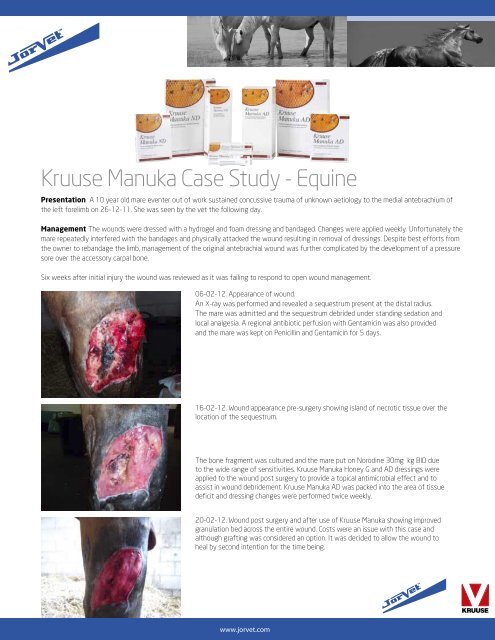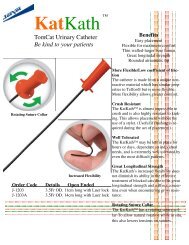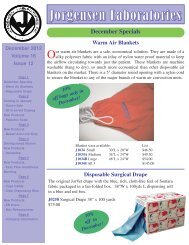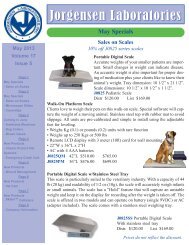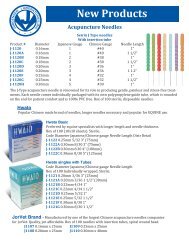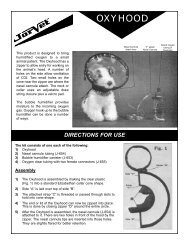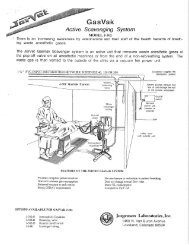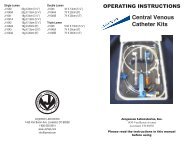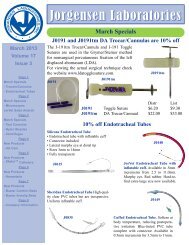Manuka Horse Case
Manuka Horse Case
Manuka Horse Case
Create successful ePaper yourself
Turn your PDF publications into a flip-book with our unique Google optimized e-Paper software.
Kruuse <strong>Manuka</strong> <strong>Case</strong> Study - Equine<br />
Presentation A 10 year old mare eventer out of work sustained concussive trauma of unknown aetiology to the medial antebrachium of<br />
the left forelimb on 26-12-11. She was seen by the vet the following day.<br />
Management The wounds were dressed with a hydrogel and foam dressing and bandaged. Changes were applied weekly. Unfortunately the<br />
mare repeatedly interfered with the bandages and physically attacked the wound resulting in removal of dressings. Despite best efforts from<br />
the owner to rebandage the limb, management of the original antebrachial wound was further complicated by the development of a pressure<br />
sore over the accessory carpal bone.<br />
Six weeks after initial injury the wound was reviewed as it was failing to respond to open wound management.<br />
06-02-12. Appearance of wound.<br />
An X-ray was performed and revealed a sequestrum present at the distal radius.<br />
The mare was admitted and the sequestrum debrided under standing sedation and<br />
local analgesia. A regional antibiotic perfusion with Gentamicin was also provided<br />
and the mare was kept on Penicillin and Gentamicin for 5 days.<br />
16-02-12. Wound appearance pre-surgery showing island of necrotic tissue over the<br />
location of the sequestrum.<br />
The bone fragment was cultured and the mare put on Norodine 30mg kg BID due<br />
to the wide range of sensitivities. Kruuse <strong>Manuka</strong> Honey G and AD dressings were<br />
applied to the wound post surgery to provide a topical antimicrobial effect and to<br />
assist in wound debridement. Kruuse <strong>Manuka</strong> AD was packed into the area of tissue<br />
deficit and dressing changes were performed twice weekly.<br />
20-02-12. Wound post surgery and after use of Kruuse <strong>Manuka</strong> showing improved<br />
granulation bed across the entire wound. Costs were an issue with this case and<br />
although grafting was considered an option. It was decided to allow the wound to<br />
heal by second intention for the time being.<br />
www.jorvet.com
23-02-12. Wound continues to improve and cleft reducing in size and depth.<br />
27-02-12. Wound continues to improve and reduce in size.<br />
05-03-12. Epithelialisation and contraction progressing well.<br />
19-03-12. Wound 4 weeks post surgery and progressing well enough not to require grafting.<br />
Outcome<br />
Following removal of the sequestrum and application of the Kruuse <strong>Manuka</strong> dressings the wound began to granulate well and no<br />
further complications retarded healing. The pressure sore responded positively to light bandaging and donut shaped pressure reduction<br />
techniques. The wound continued to progress positively through epithelialisation and contraction alone.<br />
<strong>Case</strong> Courtesy<br />
Vicky Nicholls BSc hons BVet Med MRCVS BAEDT<br />
Wright and Morten, Maccles eld, Cheshire, UK<br />
www.jorvet.com


